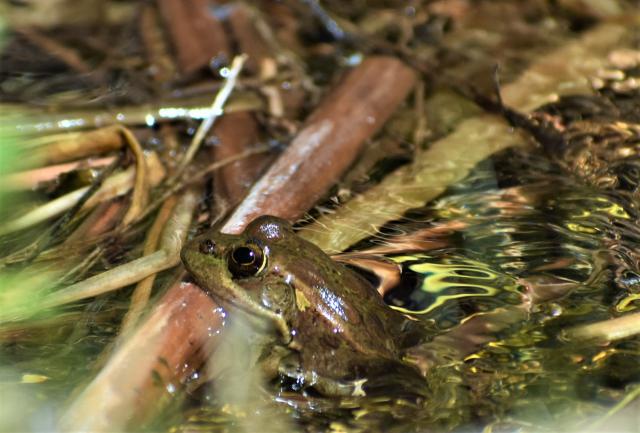Grand Canyon-Parashant National Monument to help bolster population of sensitive species
Organization:
Media Contact:
ST. GEORGE, Utah — To help bolster a population of Relict Leopard Frogs, the Bureau of Land Management Arizona State Director signed a decision on March 24, 2022, to begin reintroduction efforts of this sensitive species to its historic range within the Grand Canyon-Parashant National Monument at Pakoon Springs. The BLM and National Park Service in partnership with the University of Nevada Las Vegas, U.S. Fish and Wildlife Service and Arizona and Nevada state wildlife agencies hope to begin multiple releases of the special status species starting as early as spring 2022 and will continue releases each spring until a self-sustaining population is established.
After BLM and NPS partners completed significant restoration work over two decades at Pakoon Springs, the Relict Leopard Frog Conservation Team identified the site as a potential site for reintroduction. The team includes, among others, University of Nevada Las Vegas and agency partners including the BLM, NPS, USFWS and state wildlife agencies from Arizona, Nevada, and Utah.
The relict leopard frog, historically found in the Virgin and Colorado River drainages, experienced a dramatic decline in overall range and population size during the 20th century. By 2001, populations were restricted to two areas neighboring the Monument, in southern Nevada’s Lake Mead National Recreation Area.
“As a service first unit, the BLM and NPS are proud to help this sensitive species regain ground within its historic range. The forthcoming relict leopard frog introduction and decades long restoration efforts completed at Pakoon Springs aligns with the Department’s focus on supporting collaborative, locally led and designed conservation efforts,” said acting Arizona Strip District Manager Brian Tritle. “We look forward to continuing our work with partners including the USFWS and state wildlife agencies in Nevada, Arizona and Utah, over the next ten years to re-establish this species until it becomes a self-sustaining population.”
The action is in conformance with the 2008 Grand Canyon-Parashant National Monument Resource Management Plan and was categorically excluded from further documentation under the National Environmental and Policy Act in accordance with 516 DM 11.9. or 43 CFR 46.210.
For additional information on relict leopard frog’s historic range go to: https://www.nps.gov/lake/learn/nature/relict-leopard-frog.htm
The BLM manages about 245 million acres of public land located primarily in 12 western states, including Alaska, on behalf of the American people. The BLM also administers 700 million acres of sub-surface mineral estate throughout the nation. Our mission is to sustain the health, diversity, and productivity of America’s public lands for the use and enjoyment of present and future generations.

